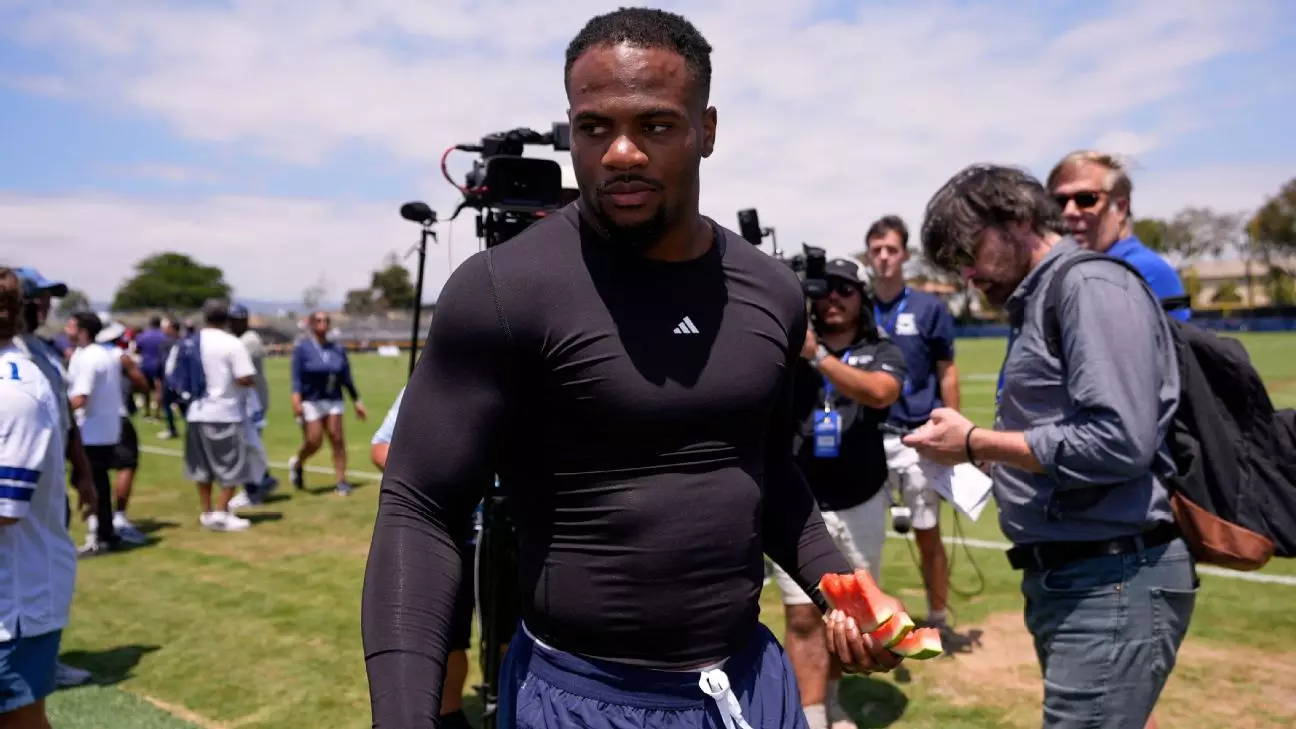Jerry Jones, the legendary owner and GM of the Dallas Cowboys, wields his words with bold bravado, positioning himself as a master negotiator who has already secured an unprecedented deal for Micah Parsons. His assertion that he offered the highest guaranteed money for a non-quarterback in NFL history reflects a desire to project power and conviction. However, beneath this gloss of confidence lies a complex web of negotiation pitfalls, communication gaps, and strategic miscalculations. Jones’s declaration, although assertive, raises questions about his understanding of the dynamics involved in athlete contracts, especially when agents push back aggressively. His framing of the negotiations as a simple matter of “writing a check” oversimplifies a process that involves player motivations, agent interests, and league constraints. If anything, this overconfidence might undermine his position by seeming dismissive of the nuances that players and their representatives consider critical.
The Contract: A Battlefield of Principles and Power
Jones’s insistence that he and Parsons “agreed” on key deal parameters reveals a misalignment between public statements and the actual negotiations. Claiming to have “negotiated” guarantees and total value without final agreement suggests a superficial understanding of how serious negotiations operate. It appears Jones views the contract as a purely financial transaction—something to be finalized through his monetary commitments— but neglects the symbolic and leverage aspects that contractual negotiations embody. The fact that Parsons’s agent, David Mulugheta, publicly rebuffed the Cowboys’ advances hints at a power struggle, with the agent perhaps seeking to maximize his client’s leverage rather than rushing into a deal for the sake of public relations. Jones’s framing of the agent as subordinate or obstructive further exposes an arrogant attitude that may alienate key players and their representatives, ultimately risking a fractured relationship that could damage team cohesion.
The Limitations of Posturing in the Real World of Football Economics
Jones’s assertions about guaranteeing “close to $200 million” bring to light the disparity between the Cowboys’ financial ambitions and the broader NFL financial landscape. Not only does this figure dwarf the guarantees of current league leaders like Myles Garrett or Nick Bosa, but it also demonstrates a potential disconnect between Jones’s bravado and the market reality. This kind of exaggerated claim risks inflating expectations unnecessarily, which could backfire if the negotiations eventually settle for less. Furthermore, his reliance on past precedent—citing Dak Prescott’s contract dealings—ignores the unique aspects of each negotiation. While Prescott’s deal was a landmark at the time, Parsons’s rising star and exceptional play might justify a higher valuation, but the scope of guarantees and the terms remain pivotal. Overconfidence and hyperbole may serve Jones’s narrative but do little to build trust or clarity with Parsons and his representatives.
The Strategic Approach: Seasons, Guarantees, and Future Leverage
Jones’s strategy to allow Parsons to play on the fifth-year option and potentially utilize franchise tags seems pragmatic from a financial management point of view. Yet, it also reflects a cautious stance that may be perceived as undervaluing Parsons’s contributions. The comparison to Prescott’s contract handling reveals a pattern: Jones prefers to control the timing and structure of negotiations, leveraging the player’s current performance and team needs. This approach risks creating friction that could have long-term repercussions for team morale and player loyalty. While Jones maintains confidence that Parsons will be on the field for the season opener, the underlying tensions suggest that the Cowboys might be more reactive than proactive in securing top-tier talent’s commitment. As the NFL evolves into a league increasingly dictated by guaranteed money and player empowerment, Jones’s willingness to settle for incremental steps might not be enough to retain elite talent like Parsons without a significant shift in strategy.
In the end, Jerry Jones’s public assertions are as much about projecting strength and control as they are about the actual negotiations happening behind closed doors. His tone suggests a man convinced of his own negotiating prowess, yet savvy observers recognize that mission-critical contracts require finesse, patience, and mutual respect—not bluster. While Jones’s bravado might rally fans and serve his ego, the real test lies in whether he can translate these claims into a fair, sustainable agreement that acknowledges Parsons’s rising star and market value. If he continues to dismiss the agency’s role or overstates his leverage, he risks undermining the team’s future stability and the franchise’s reputation for prudent management. The true power in such negotiations lies not in empty boasts but in the subtle art of balancing confidence with humility—and understanding that even the most assured leaders can fall short if they ignore the complex dance of negotiation.


Leave a Reply